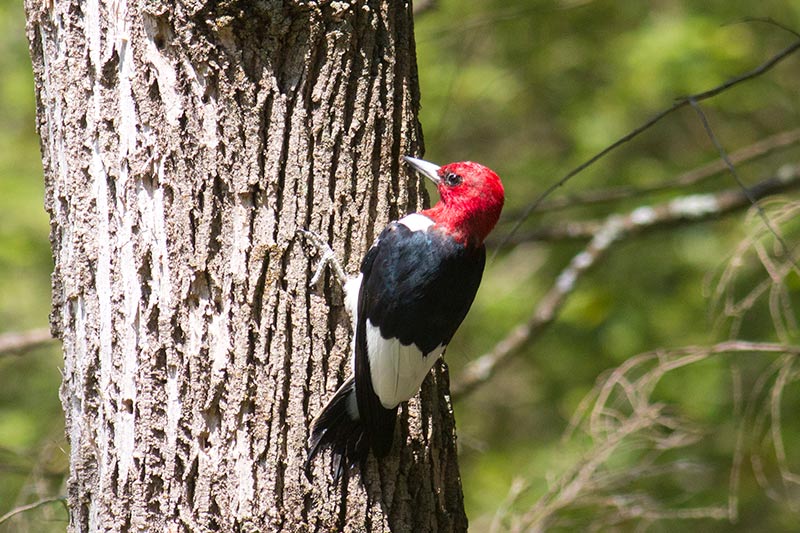Red-headed Woodpecker
8/7/16
By David Brown
On July 29th my friend Eric called me to tell me he spotted a red-headed woodpecker across the street from his house near Montoursville. I had not yet seen one in Lycoming County this year so I drove over and spent over an hour watching and photographing it as it chased a pair of red-bellied woodpeckers.

Red-headed Woodpecker
The red-headed woodpecker is the least common of the seven woodpecker species in Lycoming County. Its scientific name is Melanerpes erythrocephalus. Other species in the same genus include the red-bellied woodpecker and the acorn woodpecker of the western United States.
The red-headed woodpecker is a favorite species of many because of its striking coloration. Male and females look alike with colors neatly organized into sections of red, white, and black. Juveniles have a brown head and are overall more drab than adults. The more common red-bellied woodpecker is sometimes mistakenly called red-headed because of the partial red on the head but otherwise the two species look quite different. The red-bellied woodpecker has a pattern of black and white zebra stripes on the back and wings. In flight the red-headed woodpecker can be easily identified by the large white patch that extends from the inner wings (secondaries) across the tail. In comparison the red-bellied woodpecker has only a small white patch on each wing. The call of the red-headed woodpecker is short and more shrill than that of the red-bellied woodpecker.

Red-headed Woodpecker in flight
The red-headed woodpecker is omnivorous. It eats nuts and mast as well as insects, lizards, and rodents. Acorns are an important food in winter. The species is partially migratory, especially in northern parts of the range responding to the availability of food during winter. Last September while hawk watching at the overlook along route 15 near South Williamsport I photographed a migrating adult red-headed woodpecker.
It is only found in North America east of the Rocky Mountains. Breeding bird surveys show that the species is declining in number and range. Pennsylvania is near the northern end of the range.
In Pennsylvania it nests most abundantly in the southern and northwestern parts of the state. Its preferred habitat is a park-like forest with little understory. In Lycoming County almost all sightings occur between May and September. This summer, nesting was confirmed in the Slate Run area.
The red-headed woodpecker is rare enough in Lycoming County that all sightings are worth documenting. Get a photo if possible and report sightings to eBird or send the information to me. Even active local birders only see a few each year away from known nest sites.
Fall migration has already begun for some bird species, especially shorebirds. Raptor and songbird migration will become noticeable over the next month so watch for red-headed woodpeckers and other beautiful species as they leave their summer breeding grounds and head south.